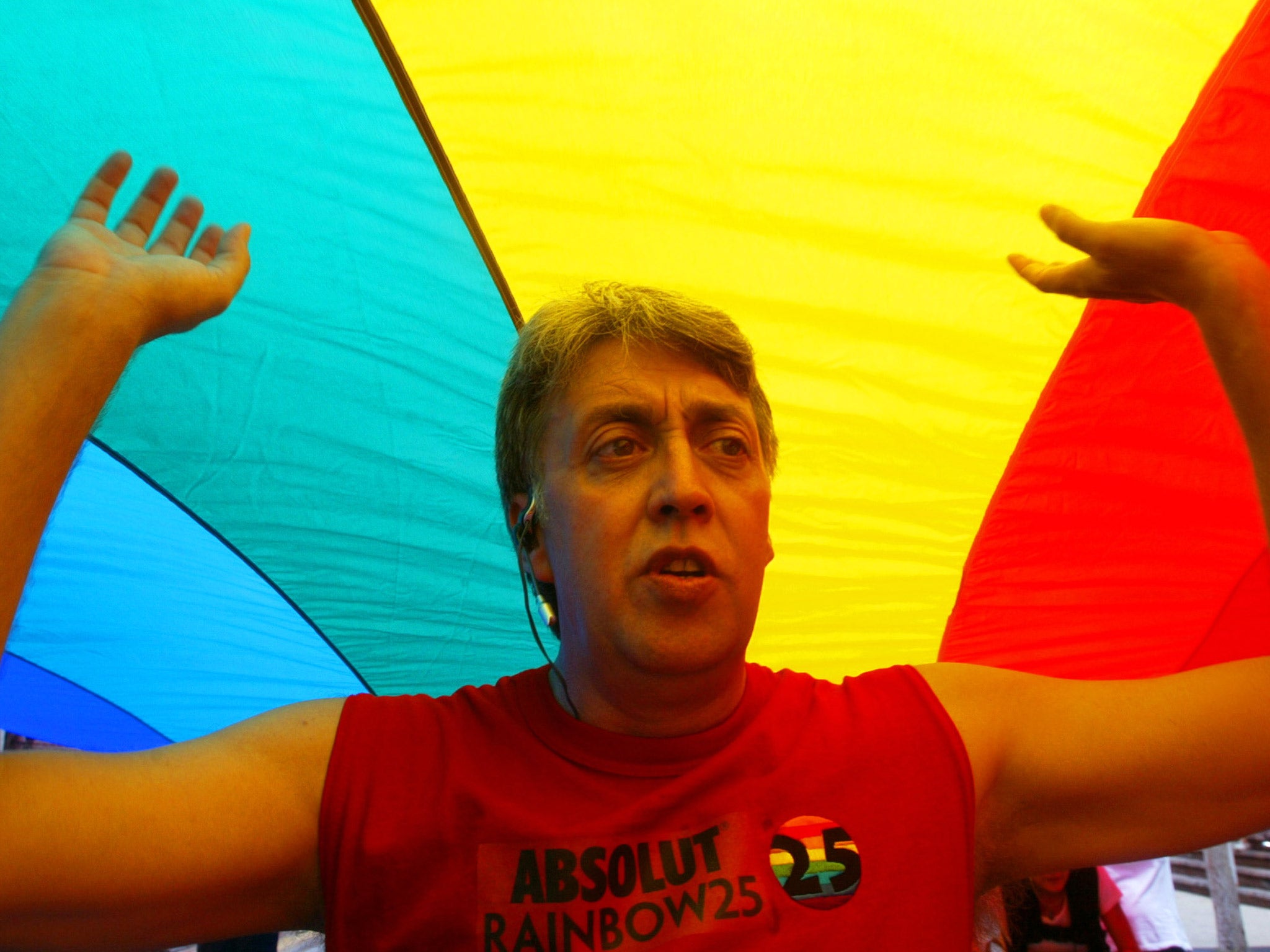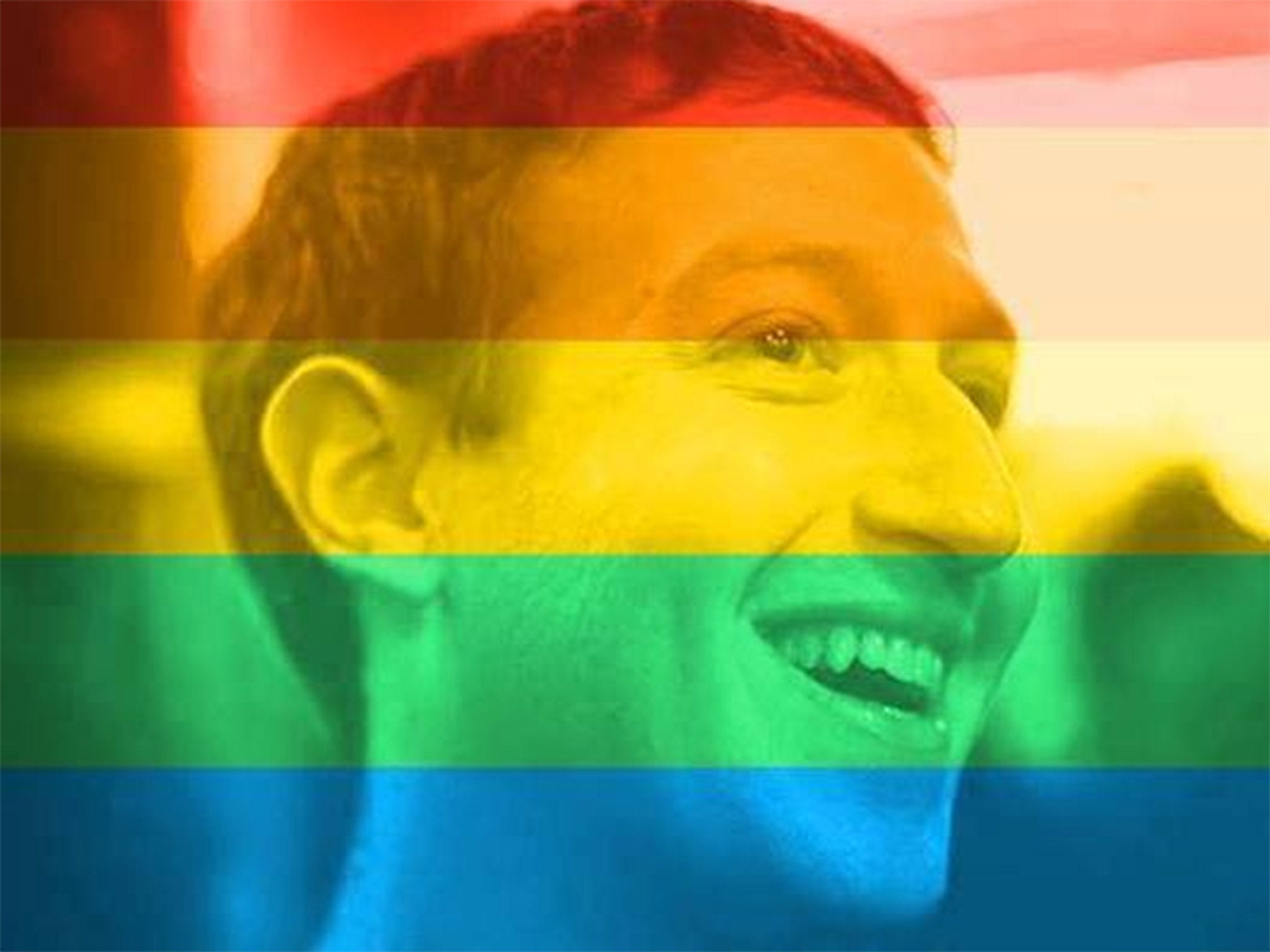How the rainbow became the symbol of gay pride
Where did that rainbow flag come from, and how did it come to symbolize gay pride and rights?

Your support helps us to tell the story
From reproductive rights to climate change to Big Tech, The Independent is on the ground when the story is developing. Whether it's investigating the financials of Elon Musk's pro-Trump PAC or producing our latest documentary, 'The A Word', which shines a light on the American women fighting for reproductive rights, we know how important it is to parse out the facts from the messaging.
At such a critical moment in US history, we need reporters on the ground. Your donation allows us to keep sending journalists to speak to both sides of the story.
The Independent is trusted by Americans across the entire political spectrum. And unlike many other quality news outlets, we choose not to lock Americans out of our reporting and analysis with paywalls. We believe quality journalism should be available to everyone, paid for by those who can afford it.
Your support makes all the difference.Many people signed on to the Internet on 26 June to find their Twitter and Facebook feeds exploding with rainbows. The Supreme Court’s landmark decision to make same-sex marriage a Constitutional right across the country sparked a huge volume of rainbow colored cartoons, .gifs and photos.
Where did that rainbow flag come from, and how did it come to symbolize gay pride and rights? The story is a touching one, involving a drag queen who would come to be known as “Busty Ross,” huge trash bins full of dye, clandestine trips to the laundromat, and the famous gay politician Harvey Milk. Gilbert Baker, an artist and drag queen, first created the Rainbow Flag in 1978.
In an interview Baker did with the Museum of Modern Art, which recently added the rainbow flag to its design collection, Baker says he started to seriously think about creating a flag for the movement in 1976, the year of the United States’ bicentennial. Baker says he saw a flag as a more powerful symbol than a seal or a sign, since it is flown to represent a nation, people or country. “We are a people, a tribe if you will. And flags are about proclaiming power, so it’s very appropriate,” he said.
"We needed something beautiful, something from us. The rainbow is so perfect because it really fits our diversity in terms of race, gender, ages, all of those things," said Baker. "Plus, it’s a natural flag—it’s from the sky! And even though the rainbow has been used in other ways in vexilography, this use has now far eclipsed any other use that it had."

The rainbow had the added benefit of being a natural and universal symbol that works in any language. The rainbow flag also had some connections with Judy Garland, a favorite figure of the gay community who sang “Somewhere Over the Rainbow” in “The Wizard of Oz.” The Advocate had called Garland "an Elvis for homosexuals."
Before that, the symbol of the gay movement was a pink triangle, which had originally been used by the Nazis in concentration camps to denote gay people and other “sexual deviants.” The gay movement had reclaimed the pink triangle during the 1970s, but some felt the symbol still had disturbing connotations.
In part because of the pink triangle, bright colors always played a strong role in gay identification, especially purple and lavender. As Forrest Wickman of Slate writes, gay people historically used bright colors to signal their sexuality – including bright yellow socks, and the green carnation that Oscar Wilde famously wore on his lapel.
Baker's grandmother owned a woman’s clothing story, and he was fascinated with clothing and fabrics from a young age. However, he grew up in a small, conservative town in Kansas, and never learned to sew. He left home to join the army, and then headed to San Francisco when he left the army in 1972, just as the city’s gay community was flowering.
“Once I was finally liberated from my Kansas background, the first thing I did was get a sewing machine,” he told the Web site Refinery 29 in an interview. “Because it’s 1972 and I have to look like Mick Jagger and David Bowie every single second,” he says. “Taffeta jumpsuits.”
Because of his sewing talents, Baker started taking over the task of making banners for the protest marches. The rainbow flag first rose to prominence when Harvey Milk, a member of the San Francisco Board of Supervisors and the first openly gay politician in a major U.S. city, asked Baker to make a flag for a march he was organizing -- just a few months before Milk was assassinated.

Baker recalled making the first rainbow flags with about 30 volunteers in the top-floor attic gallery of the Gay Community Center at 330 Grove Street in San Francisco. They had huge trashcans filled with water and dye, and dyed thousands of yards of cotton, ending up covered in colored dye. To rinse out the dye, they needed to use a laundromat. They knew they weren’t supposed to put dye in public washing machines, lest the next person ended up with pink underwear.
So they waited until late at night to visit, and put Clorox in the machines after they left. The group raised two flags in the United Nations Plaza in downtown San Francisco on June 25, 1978. One was the rainbow flag, while another was an American flag with rainbow strips instead of red, white and blue.
Baker’s rainbow flag actually originally had eight colors – hot pink, red, orange, yellow, green, turquoise, indigo/blue and violet -- but it gradually lost its stripes until it became the six-color version most commonly used today. Each of the colors has its own significance, he says: hot pink for sex, red for life, orange for healing, yellow for sunlight, green for nature, turquoise for art, indigo for harmony and violet for spirit.
The flag lost its hot pink stripe when Baker approached the Paramount Flag Company to begin mass producing them – the hot pink fabric was too rare and expensive to include. The flag lost its indigo stripe before the 1979 Gay Freedom Day Parade. The committee organizing the parade wanted to split the flag in half and fly each part from the light poles along both sides of Market Street, so it became a six-striped flag. Baker says the flag was cemented as an international symbol in 1994, when he made a mile-long flag for the 25th anniversary of the Stonewall riots.
Baker went on to incorporate the idea of sewing the flag into his drag persona, taking the amazing drag name of “Busty Ross.”
Today, the rainbow flag is an almost universally recognized symbol for gay pride, both online and off.
Copyright: Washington Post
Join our commenting forum
Join thought-provoking conversations, follow other Independent readers and see their replies
Comments